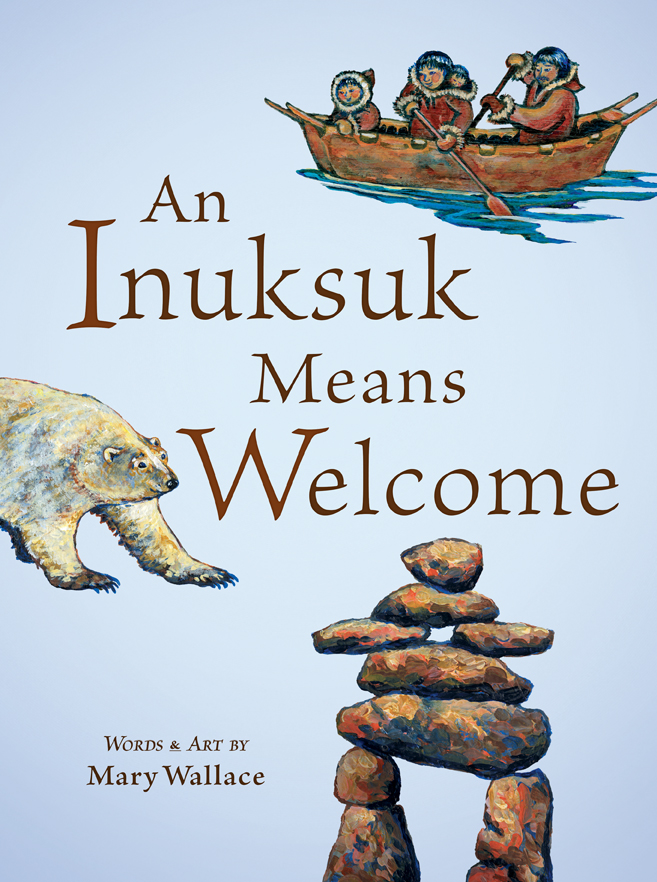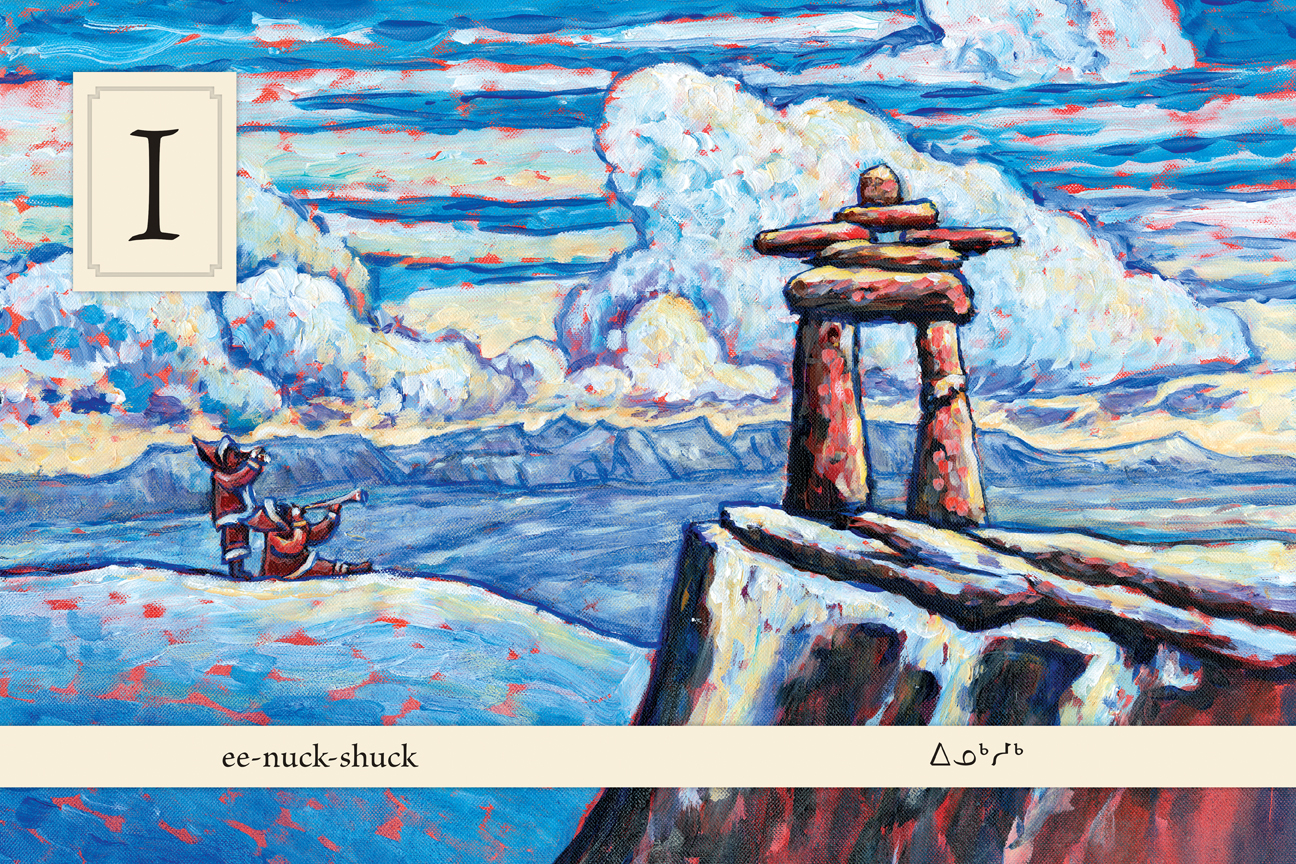| ________________
CM . . .
. Volume XXII Number 10. . . .November 6, 2015
excerpt:
Aside from the 88 words of the introduction and the pictures and descriptions of seven types of inuksuit on the last page, the complete text of An Inuksuk Means Welcome is 94 words, which includes the pronunciation of each word in the acrostic. To me, there is something out of balance when the introduction equals the text in word count. If there were more substance in the text, perhaps the reader would not need to be told that “the letters create an overview of life in the Arctic”.
The descriptions of the seven types of inuksuit might have been more useful if they had been included with their explanations in the body of the text where appropriate, rather than seeming to be relegated to the end of the book, almost as though they were an afterthought. Mary Wallace has created some beautiful illustrations that are rich with colour and movement. They demonstrate her love for the people and land of the Arctic. The question still remains: Would I buy this book? If I had a limited budget and was looking for a picture book on the Arctic for the 3- to 7-year-old range, I would choose the 2009 I is for Inukshuk because of the additional textual information provided. An Inukshuk Means Welcome, while containing beautiful illustrations, is lacking in substance. This is not a bad book, just not a particularly good one. Three stars for illustration but only one star for text. Recommended with Reservations. After 25 years of service with the Halifax Regional School Board, Rebecca King, a teacher-librarian, retired.
To comment
on this title or this review, send mail to cm@umanitoba.ca.
Copyright © the Manitoba Library Association. Reproduction for personal
use is permitted only if this copyright notice is maintained. Any
other reproduction is prohibited without permission.
Next Review |
Table of Contents for This Issue
- November 6, 2015. |

 As is acknowledged on the verso of the title page, “This book contains material that has previously appeared in
As is acknowledged on the verso of the title page, “This book contains material that has previously appeared in